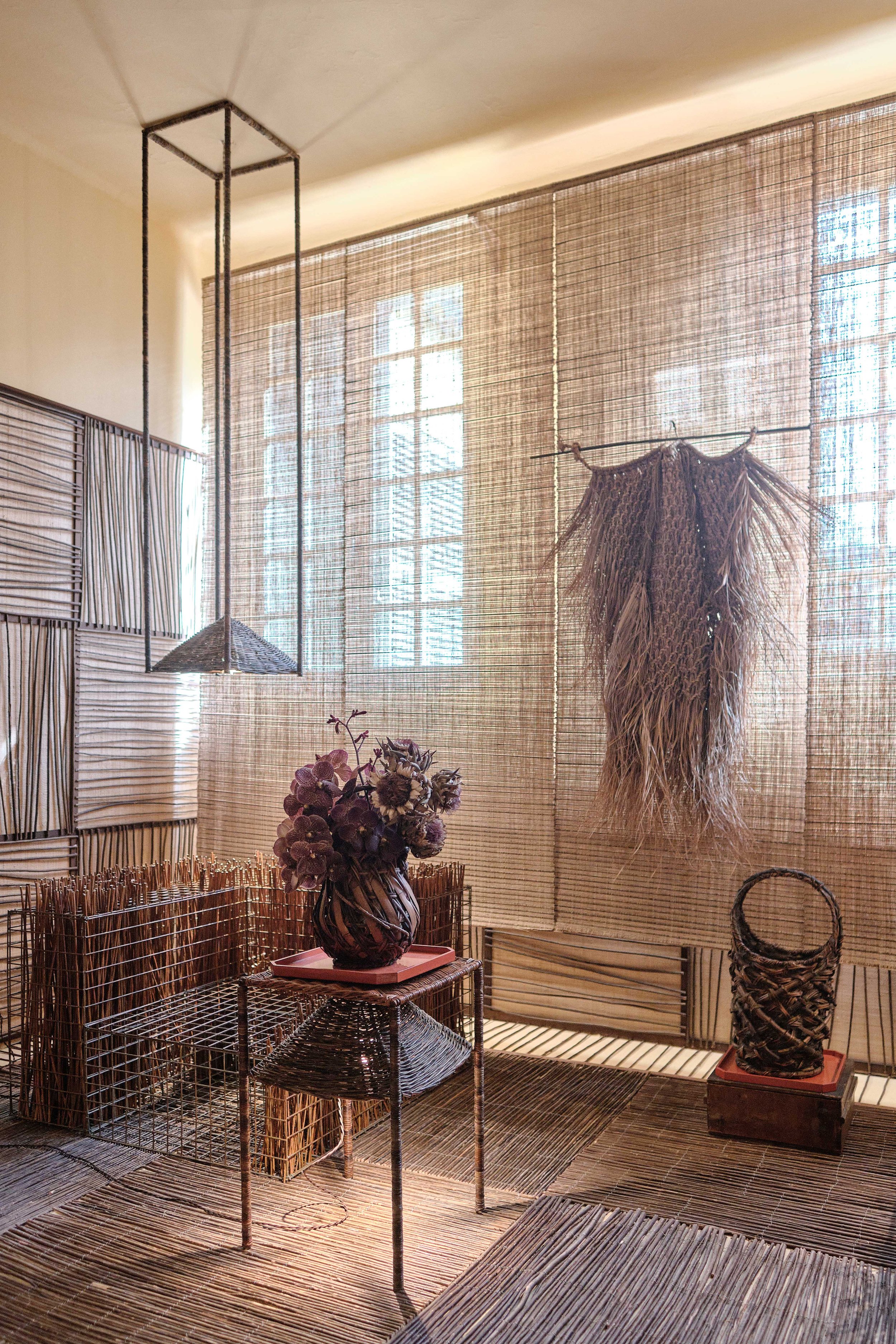Service polylobé en faïence, Primavera
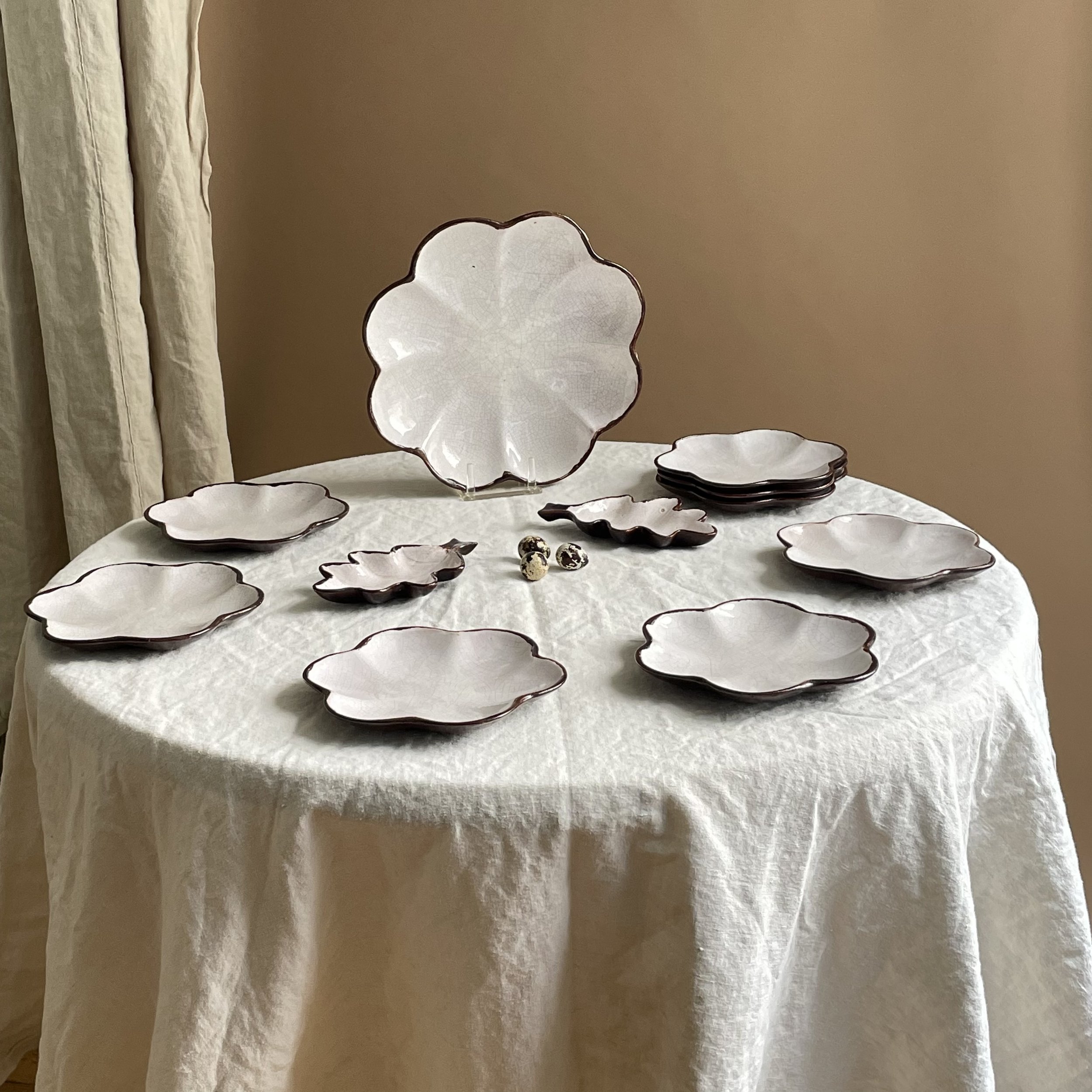
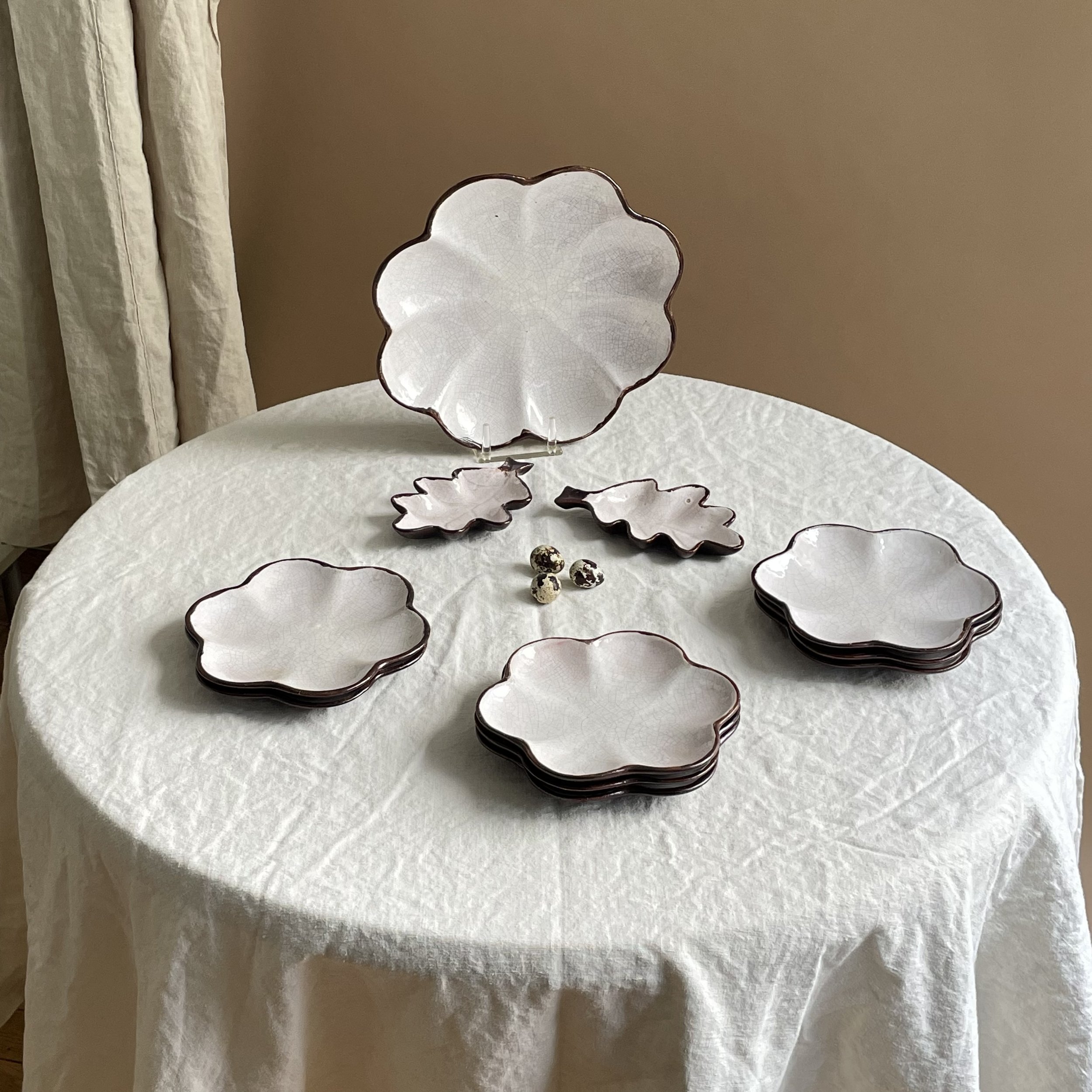
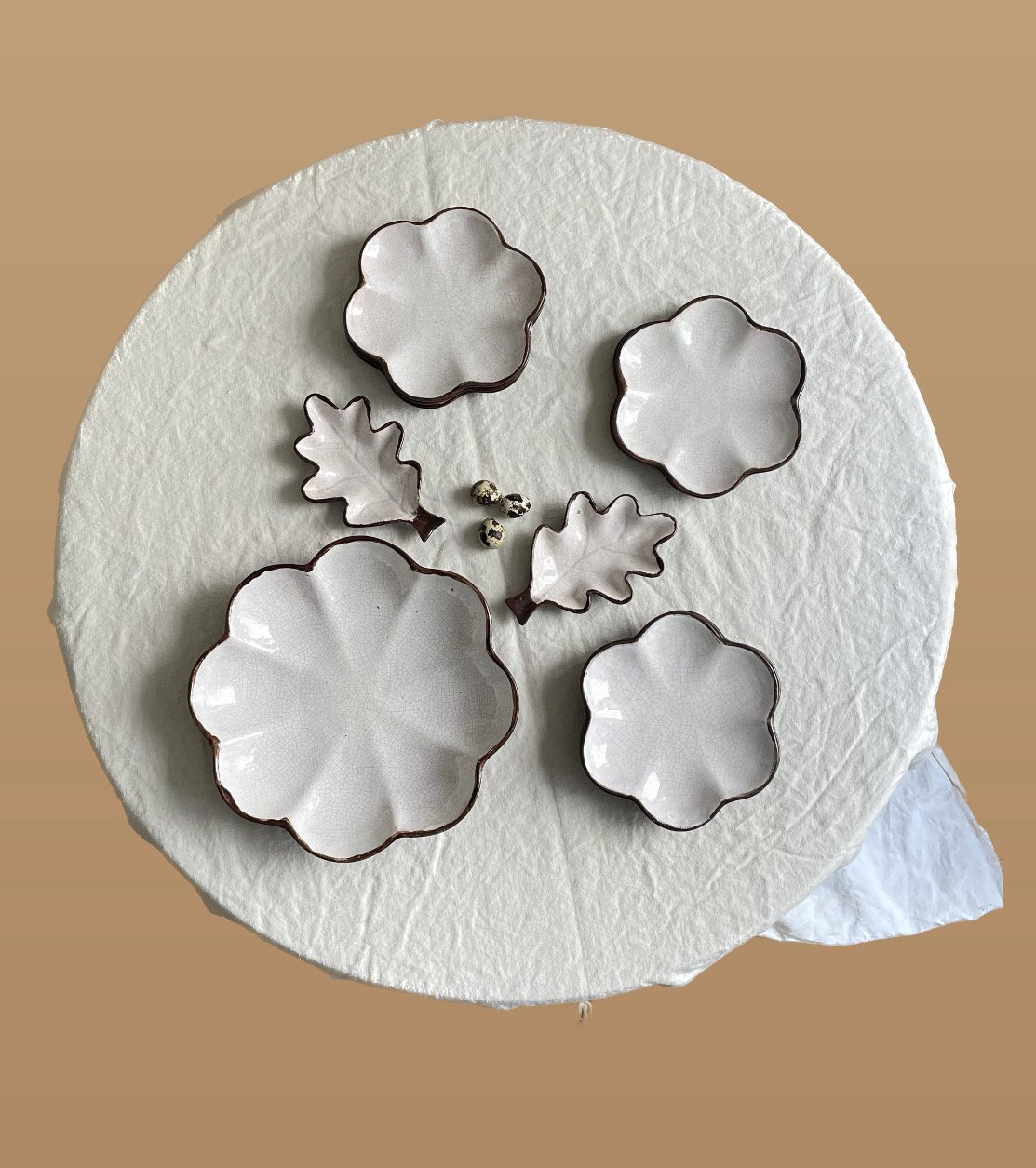
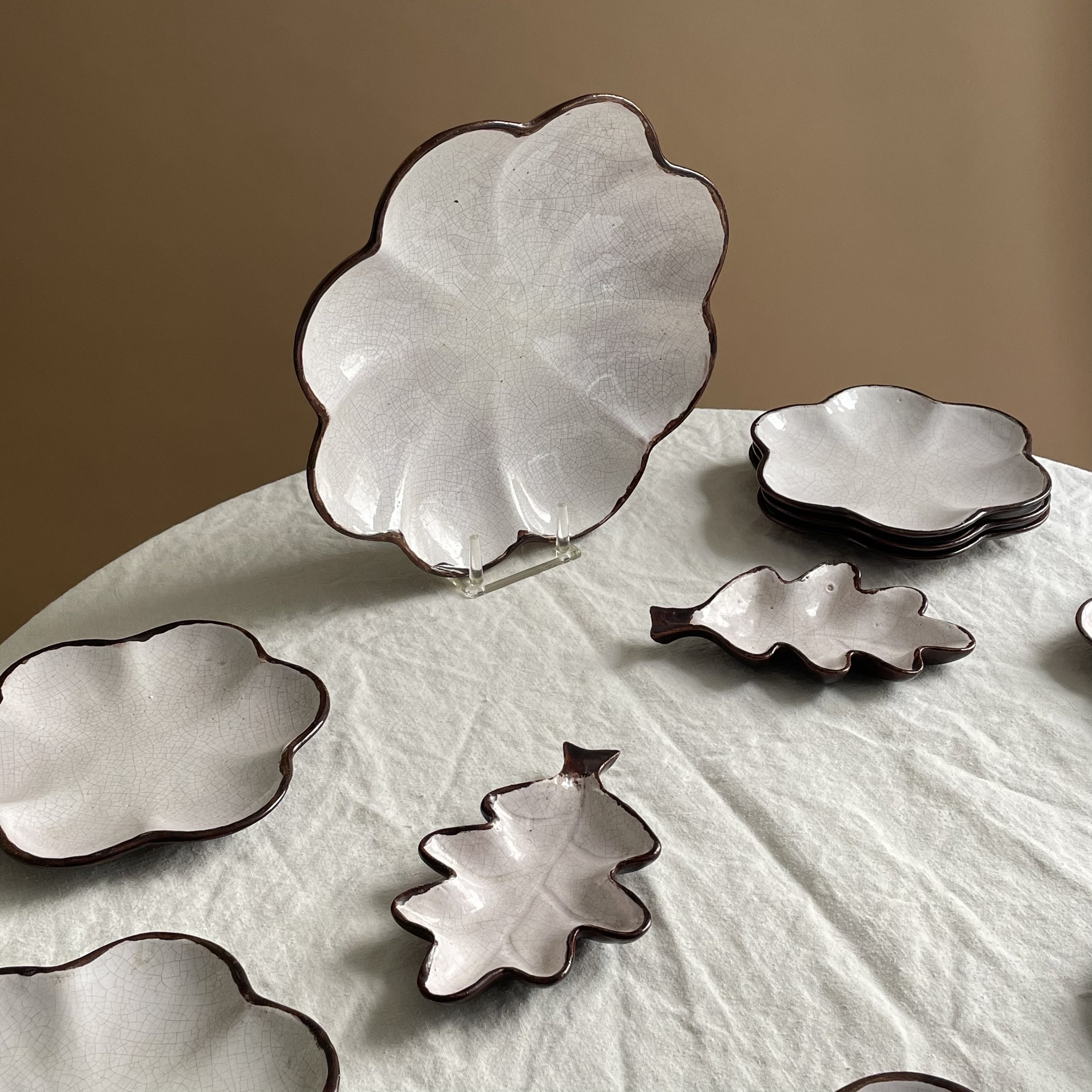
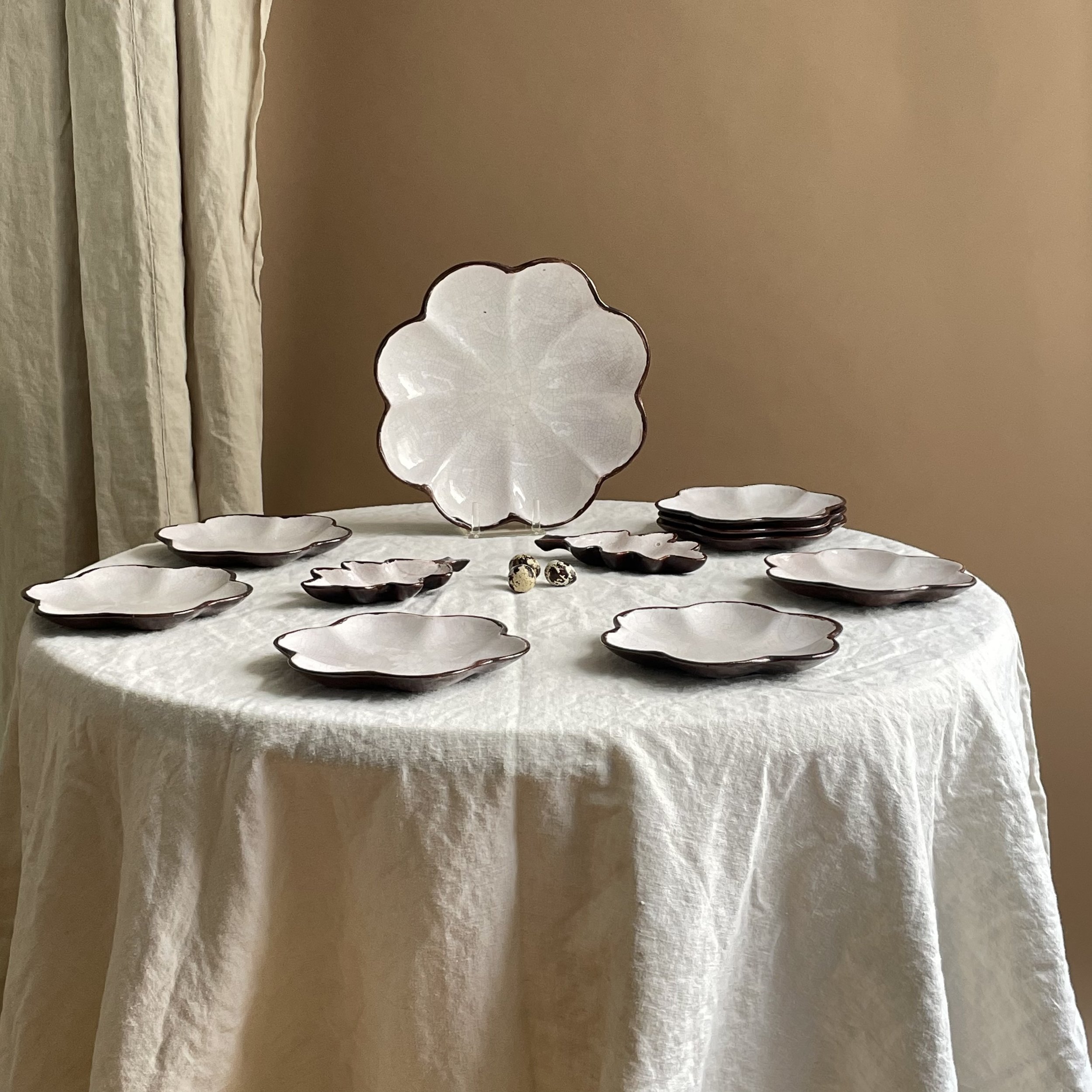
Service polylobé en faïence, Primavera
Service à salade polylobé en faïence craquelée beige et brun comprenant :
deux coupes feuilles de chêne h 2,5 x L 18,5 x l 12 cm
huit assiettes creuses h 2,8 x diam 20,5 cm
un saladier h 5 x diam 30,5 cm
Atelier Primavera, numéros marqués en creux au revers
Circa 1950
Bon état général (Usures visibles, micro-éclats d’émail et égrenures)
***Centenaire de la villa Noailles***
Cet ensemble est présenté à la villa Noailles jusqu’au 8 septembre 2023 dans l’exposition “L’appartement de Charles et Marie Laure de Noailles” scénographiée par Pierre Yovanovitch. L’achat est possible dès maintenant, et la remise en mains propres ou livraison à partir du 18 septembre 2023.
Salad service in beige and brown cracked earthenware including: two bowls oak leaves h 2.5 x L 18.5 x W 12 cm, eight soup plates h 2.8 x diam 20.5 cm, a salad bowl h 5 x diam 30.5 cm
Primavera workshop, numbers marked in hollow on the reverse
Circa 1950
Good condition (visible wear, micro-chips of enamel and chips)
***Centennial of the villa Noailles***
This set is presented at the Villa Noailles until September 8, 2023 in the exhibition "L'appartement de Charles et Marie Laure de Noailles" designed by Pierre Yovanovitch. The purchase is possible now, and the handing-over or delivery from September 18th 2023.
Extrait de Colette Guéden, Primavera et la céramique par Anne Lajoix, dans les dossiers de la Faïence fine, avril 2010
Primavera, le New deal des artisans et un tremplin
Dès 1911, René Guilleré (1878-1931), animé d'une passion pour les objets authen- tiques du terroir et fondateur de la Société des artistes décorateurs en 1901 "pour réagir contre le mercantilisme, la copie honteuse, le mauvais goût et l'inertie du commerce et de l'industrie" selon Maurice Dufrêne (7), parcourt la France pour trouver les meilleurs artisans afin de les faire connaître à Paris. En effet, il dirige l'atelier Primavera qu'il a créé en 1911 ou 1912 selon les sources, avec sa femme, Charlotte Chauchet-Guilleré (1878-1964), peintre-décoratrice, directrice artistique jusqu'en 1938, moment où elle dénombre environ 12.000 modèles exécutés pour Primavera d'a- près les modèles fournis aux artisans par les dessinateurs maison. D'après nos notes prises lors d'un entretien avec Colette Guéden, en janvier 1980, Primavera était au départ un "petit atelier pratiquant une sorte d'esthétisme et de mécénat pour diffuser et donner un nouvel élan aux petits artisans français, grâce à la collecte d'objets usuels exécutés dans une belle matière". (…)
Lorsque le premier Salon de la Lumière est organisé en 1939, jumelé avec le Salon des artistes décorateurs, ouvert au Grand Palais le 11 mai 1939. La guerre ralentit alors les activités de tout l'atelier jusqu'en 1946. L'Etat (le Mobilier national) fait de nombreux achats à partir de 1946 : jardinières, vases, lampes, sièges, tapis.
Pour l'exposition Fantaisies 51, nous apprenons que les collections de Primavera ont deux sources, d'une part, on l'a vu, la sélection d'objets en France, et d'autre part, les créations d'objets exécutés dans certains ateliers. Cette année-là, ils proviennent de Vallauris et de Malicorne.
Marie-Andrée Huchard, entrée au Printemps en 1965, prend la succession de Colette Guéden en 1973 en créant la "Boutique Noire" et l'année suivante elle est nommée, à son tour, directeur artistique.
Excerpt from Colette Guéden, Primavera and ceramics by Anne Lajoix, in the Fine Earthenware Files, April 2010
Primavera, the New deal for artisans and a springboard
Since 1911, René Guilleré (1878-1931), driven by a passion for authentic local objects and founder of the Society of Decorative Artists in 1901 "to react against commercialism, shameful copying, bad taste and the inertia of commerce and industry" according to Maurice Dufrêne (7), travels around France to find the best craftsmen to make them known in Paris. Indeed, he directed the Primavera workshop that he created in 1911 or 1912 according to sources, with his wife, Charlotte Chauchet-Guilleré (1878-1964), painter-decorator, artistic director until 1938, when she counted about 12,000 models executed for Primavera according to the models supplied to the craftsmen by the in-house designers. According to our notes taken during an interview with Colette Guéden, in January 1980, Primavera was at the beginning a "small workshop practising a kind of aestheticism and patronage to diffuse and give a new impulse to the small French craftsmen, thanks to the collection of usual objects carried out in a beautiful matter". (...)
When the first Salon de la Lumière was organized in 1939, twinned with the Salon des artistes décorateurs, opened at the Grand Palais on May 11, 1939. The war then slowed down the activities of the whole workshop until 1946. The State (the Mobilier National) made numerous purchases from 1946 onwards: planters, vases, lamps, seats, carpets.
For the exhibition Fantaisies 51, we learn that the collections of Primavera have two sources, on the one hand, as we have seen, the selection of objects in France, and on the other hand, the creations of objects executed in some workshops. That year, they came from Vallauris and Malicorne.
Marie-Andrée Huchard, who joined Printemps in 1965, took over from Colette Guéden in 1973 by creating the "Boutique Noire" and the following year she was named artistic director.






